Florence captivates visitors with its Renaissance masterpieces, grand palazzi, and storied streets. But beyond the city’s magnificent core lies the heart and soul of Tuscany—rolling vineyards, medieval hill towns, and coastal treasures just waiting to be explored.
When you need a break from museum-hopping or simply want to experience more of Italy’s diverse landscapes, these fifteen day trips offer perfect escapes from Florence.
Siena
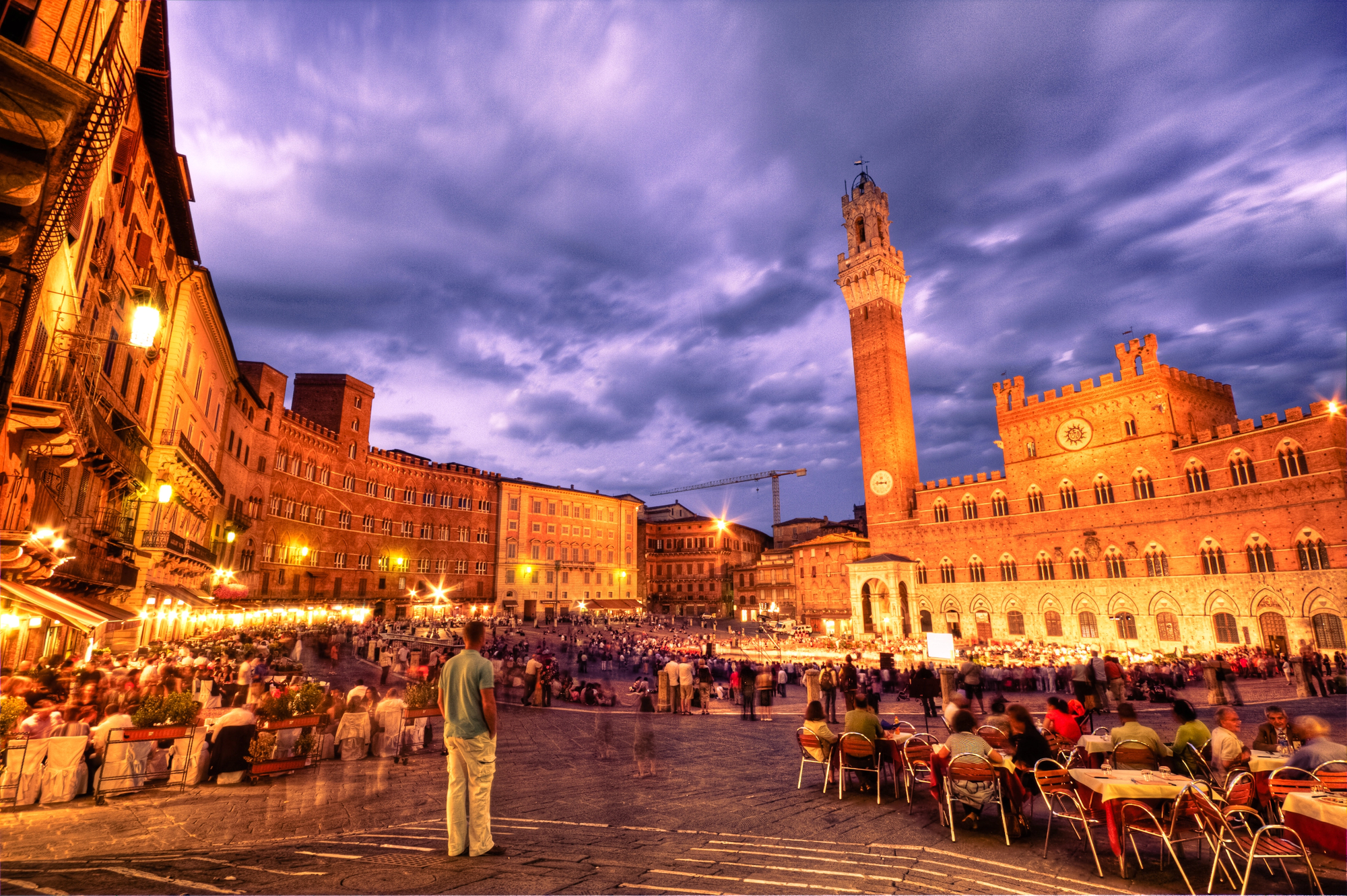
Siena stands as Florence’s historic rival, and this medieval gem makes for one of the most rewarding day trips in Tuscany. The city’s heart is the shell-shaped Piazza del Campo, home to the twice-yearly Palio horse race that transforms the square into a colorful arena of neighborhood competition.
Surrounded by rust-colored buildings and dominated by the soaring Torre del Mangia, this piazza invites visitors to linger at outdoor cafés and absorb centuries of history.
Siena’s magnificent black-and-white striped cathedral remains one of Italy’s most stunning Gothic achievements, housing masterpieces by Michelangelo, Donatello, and Bernini.
Inside, don’t miss the Piccolomini Library with its vibrant frescoes that rival the Sistine Chapel in beauty. The city’s winding medieval streets reveal hidden churches, artisanal shops, and authentic restaurants serving traditional Tuscan cuisine. Buses depart regularly from Florence’s SITA station, taking approximately 1 hour and 15 minutes, making this an easy
Pisa
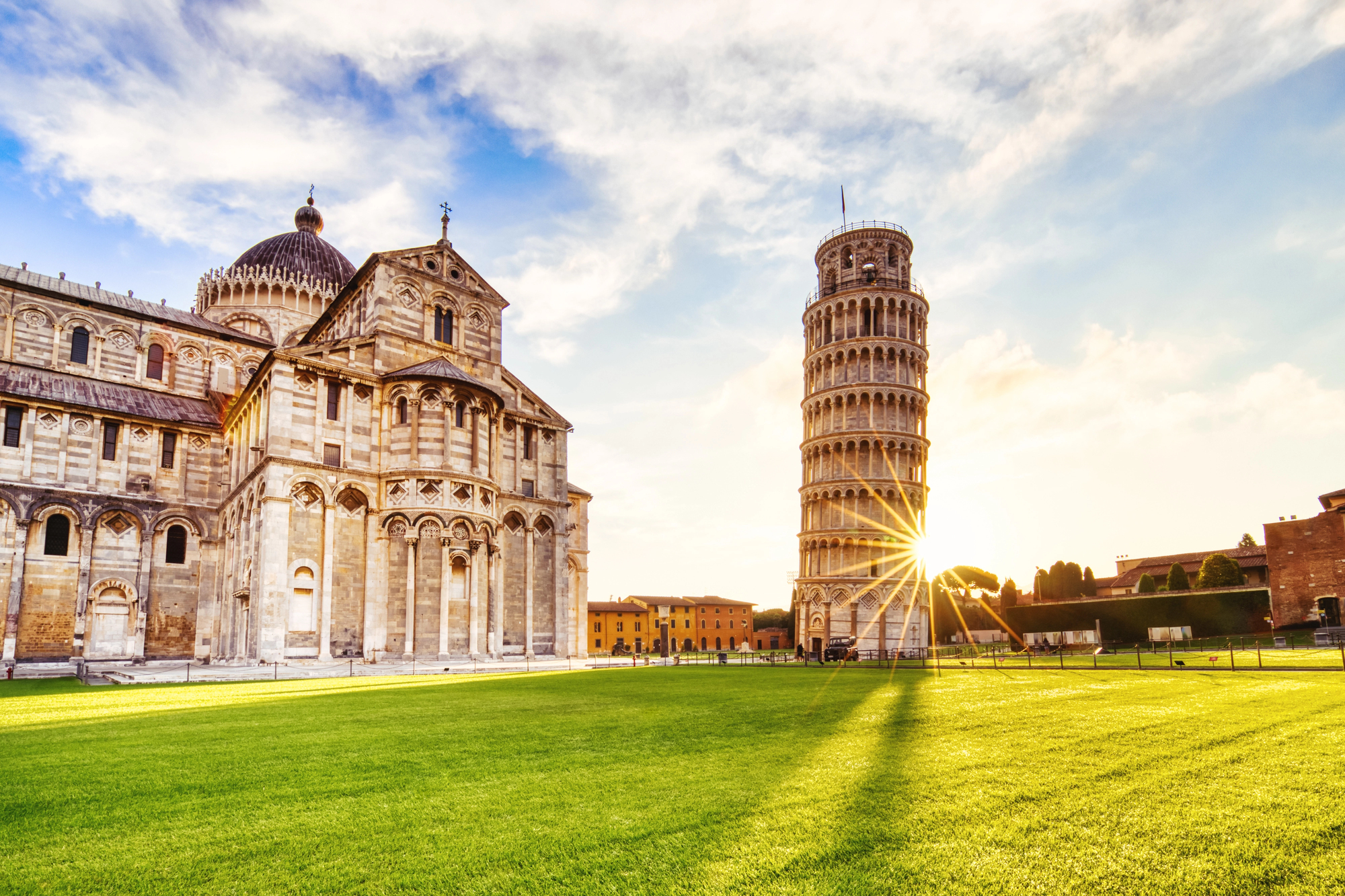
Though often reduced to a quick photo stop at its famous Leaning Tower, Pisa deserves more time and appreciation. The city’s UNESCO-listed Piazza dei Miracoli (Square of Miracles) forms one of the world’s most beautiful architectural ensembles, housing not only the tilting campanile but also the magnificent Duomo, the elaborate baptistery, and the peaceful Camposanto Monumentale.
The pristine green lawn surrounding these marble masterpieces creates a striking contrast that photographers adore. Beyond the tower, Pisa reveals itself as a vibrant university town with atmospheric streets, beautiful riverside walks along the Arno, and far fewer tourists than you’ll encounter in Florence.
The journey takes just over an hour by direct train from Florence’s Santa Maria Novella station, with services running frequently throughout the day. For the best experience, arrive early in the morning or late in the afternoon when tour groups have departed, allowing you to climb the tower without long waits.
San Gimignano
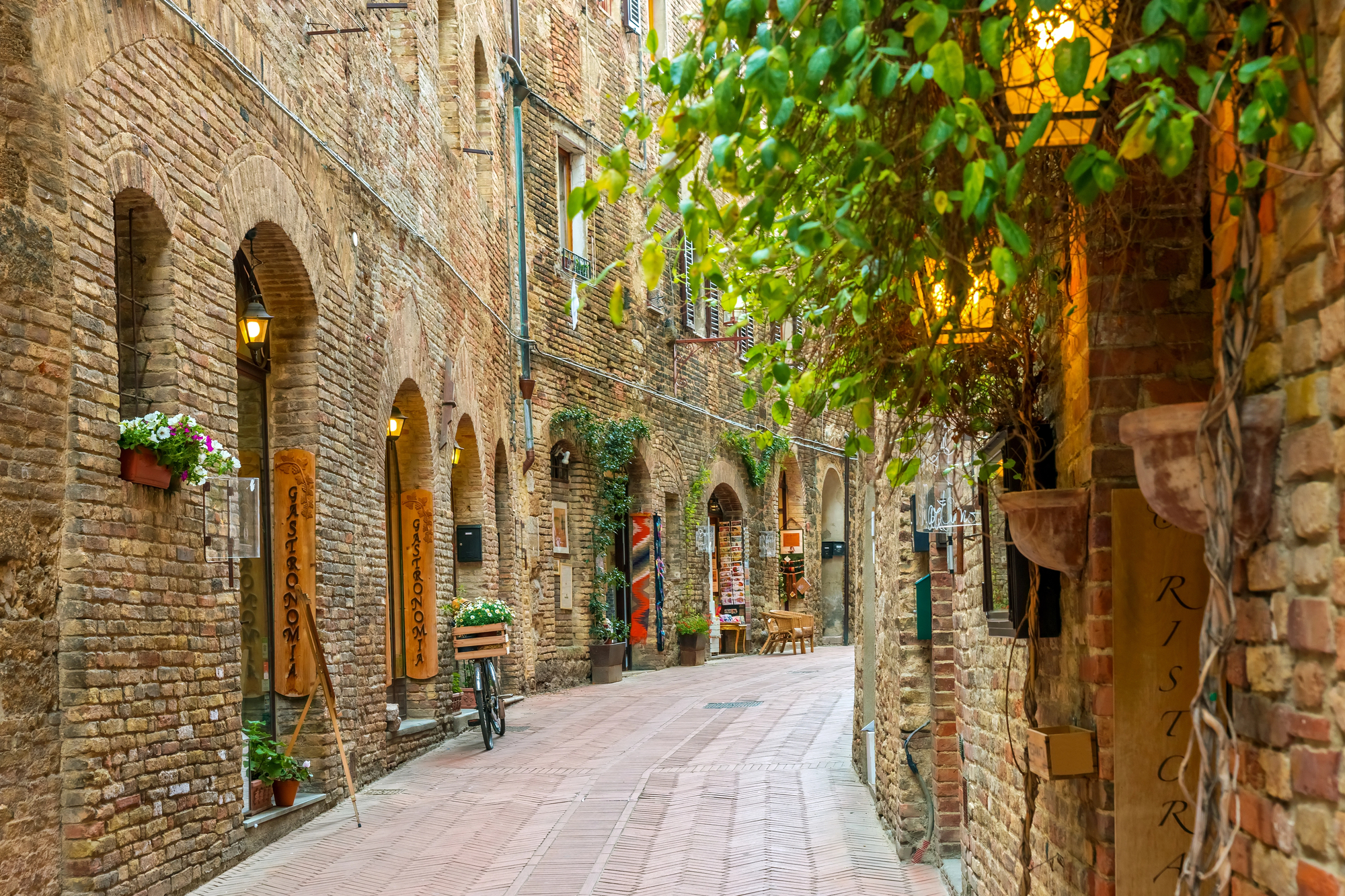
Rising dramatically from the rolling Tuscan countryside, San Gimignano’s medieval towers create one of Italy’s most distinctive skylines. Once numbering 72, these stone sentinels were built by rival noble families competing for prestige, with 14 surviving today to earn the town its nickname as the “Medieval Manhattan.”
Walking through the perfectly preserved historic center feels like stepping back in time, with cobblestone streets, centuries-old buildings, and panoramic views at every turn.
While the town attracts day-trippers, it retains authentic charm, especially in the early morning and evening hours.
Don’t miss sampling the award-winning gelato at Gelateria Dondoli in the main square, exploring the simple yet beautiful Collegiate Church with its remarkable frescoes, or climbing the Torre Grossa for breathtaking views across the surrounding vineyards. Reaching San Gimignano requires taking a bus from Florence to Poggibonsi, then transferring to a second bus for the final leg of the journey—worth the effort for one of Tuscany’s most enchanting towns.
Like Travel Pug’s content? Follow us on MSN.
Lucca
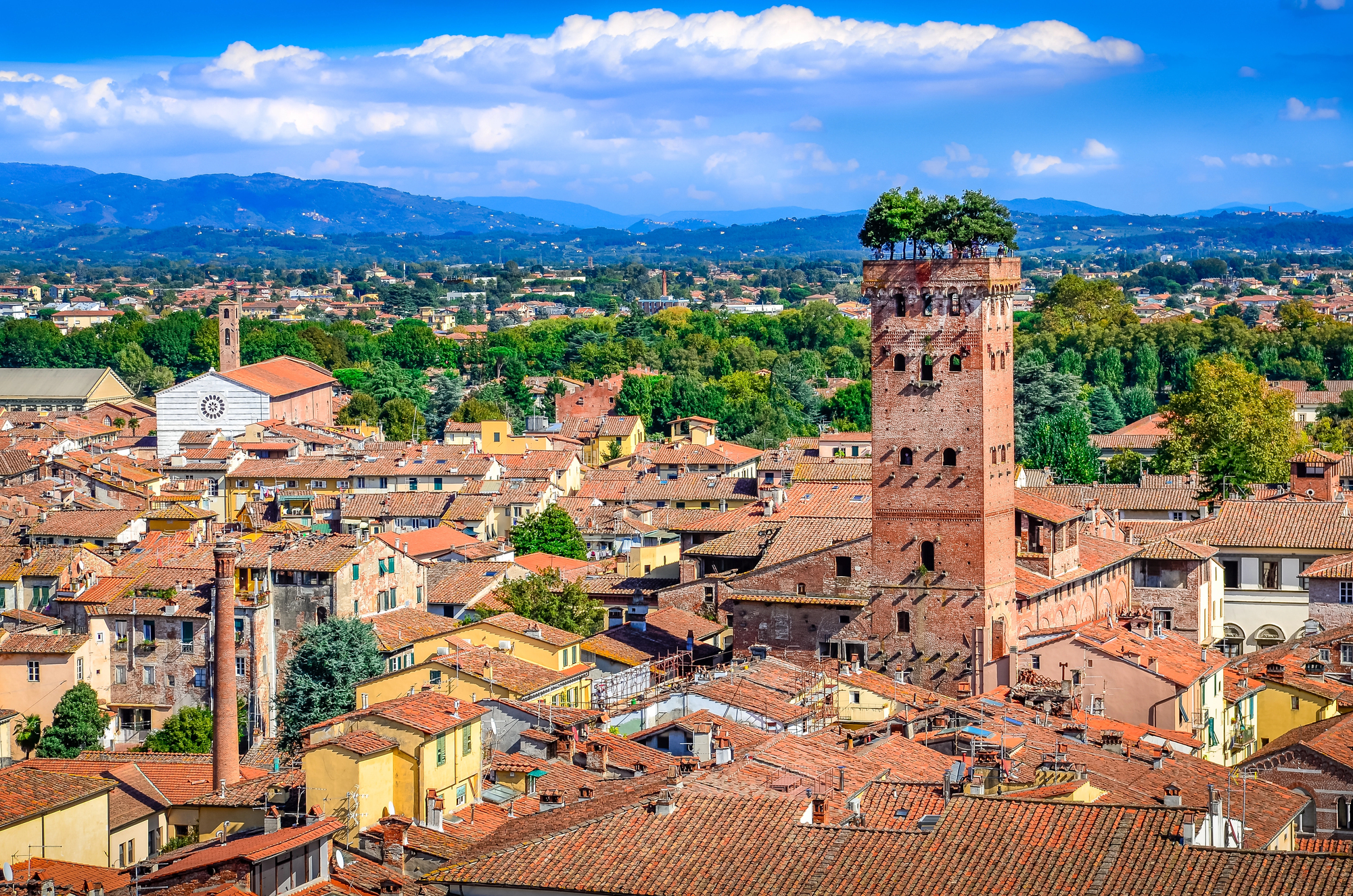
Completely encircled by Renaissance-era walls that have been transformed into a tree-lined promenade, Lucca offers a perfect day of relaxed exploration. Unlike many historic cities, Lucca banned cars from its center long ago, creating a peaceful atmosphere where visitors can wander narrow lanes, browse boutique shops, and relax in charming piazzas.
The unusual oval-shaped Piazza dell’Anfiteatro, built on the foundations of an ancient Roman amphitheater, now houses cafés and restaurants within its perfectly curved perimeter. Music lovers will appreciate Lucca’s connection to composer Giacomo Puccini, whose birthplace can be visited near the central San Michele in Foro church with its stunning façade.
For active travelers, renting bicycles to ride atop the wide defensive walls provides a unique perspective of both the historic center and the surrounding countryside. Direct trains run frequently between Florence and Lucca, taking approximately 1 hour and 20 minutes, making this an accessible and rewarding day trip.
Chianti Wine Region

The quintessential Tuscan landscape unfolds in Chianti, where cypress-lined roads wind past hillside vineyards, ancient castles, and stone farmhouses. This wine region between Florence and Siena produces Italy’s famous Chianti Classico, recognizable by the black rooster seal on its bottles.
A day trip here combines scenic beauty with culinary indulgence as you sample robust red wines paired with local specialties like pecorino cheese, wild boar salami, and the region’s exceptional olive oil. Villages like Greve in Chianti, with its triangular main square lined with artisanal food shops, and Castellina in Chianti, with its impressive medieval fortress, provide charming stops between winery visits.
While public transportation to Chianti towns exists, the region is best explored by car or organized tour that allows you to venture down scenic country roads at your own pace. Many tour companies offer day trips from Florence that include transportation, guided tastings, and a traditional Tuscan lunch amid the vines.
Cinque Terre
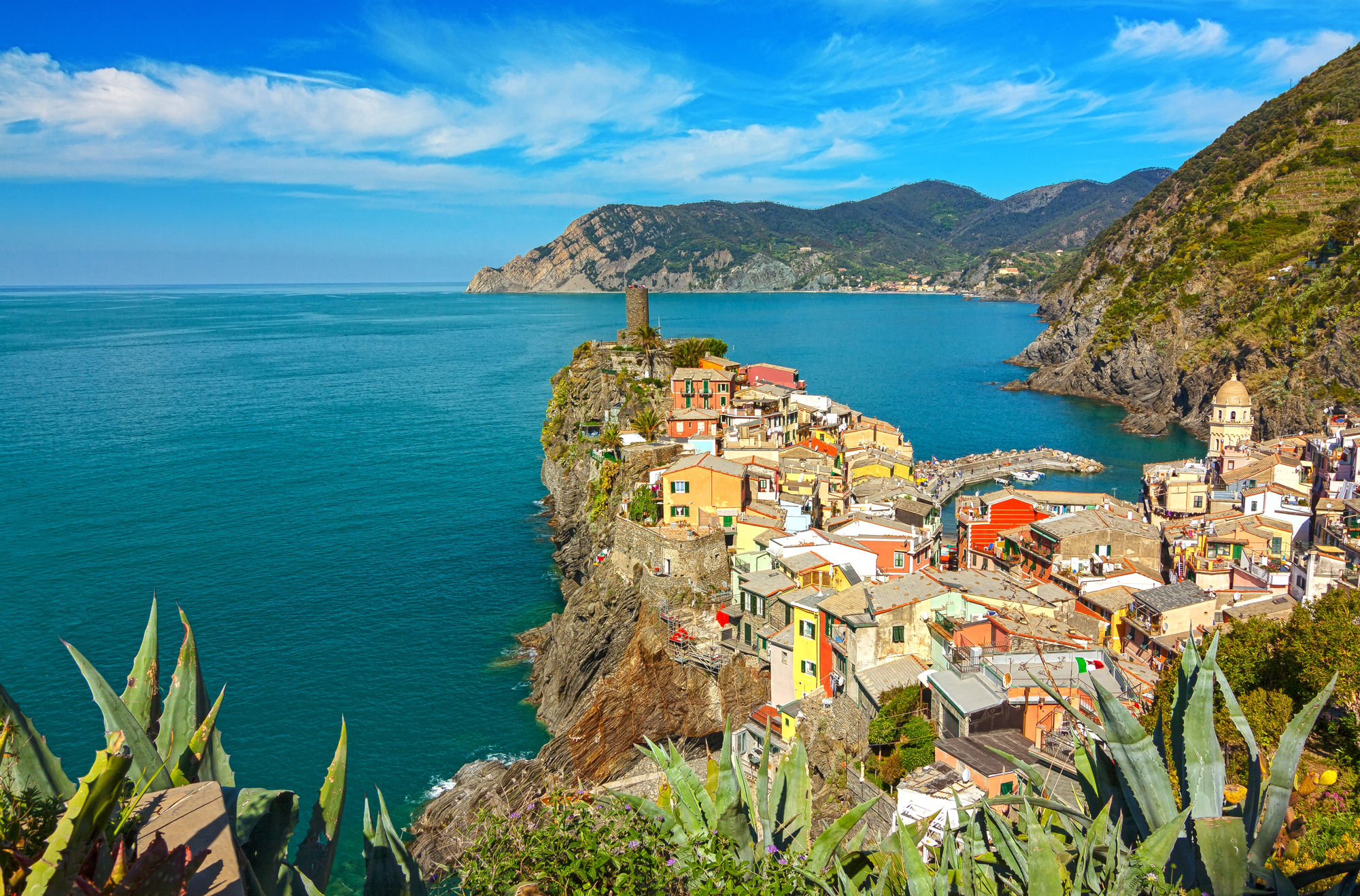
Though ambitious as a day trip, the colorful fishing villages of Cinque Terre provide a stunning contrast to Florence’s Renaissance urbanity. This string of five towns—Monterosso al Mare, Vernazza, Corniglia, Manarola, and Riomaggiore—clings to rugged cliffs along the Ligurian coast, connected by scenic hiking trails and a local railway.
Each village displays distinctive character through pastel-colored houses, tiny harbors, and terraced vineyards that climb impossibly steep hillsides. The journey requires an early start, taking approximately 2.5 hours each way by train with transfers in Pisa and La Spezia.
Once there, visitors can hike between towns on the famous Sentiero Azzurro trail (when open), swim in crystal-clear Mediterranean waters, sample local specialties like pesto (which originated in this region), and photograph some of Italy’s most iconic coastal scenes. While rushed as a day trip, determined travelers can experience the highlights, though consider an overnight stay if your schedule allows.
Like Travel Pug’s content? Follow us on MSN.
Volterra
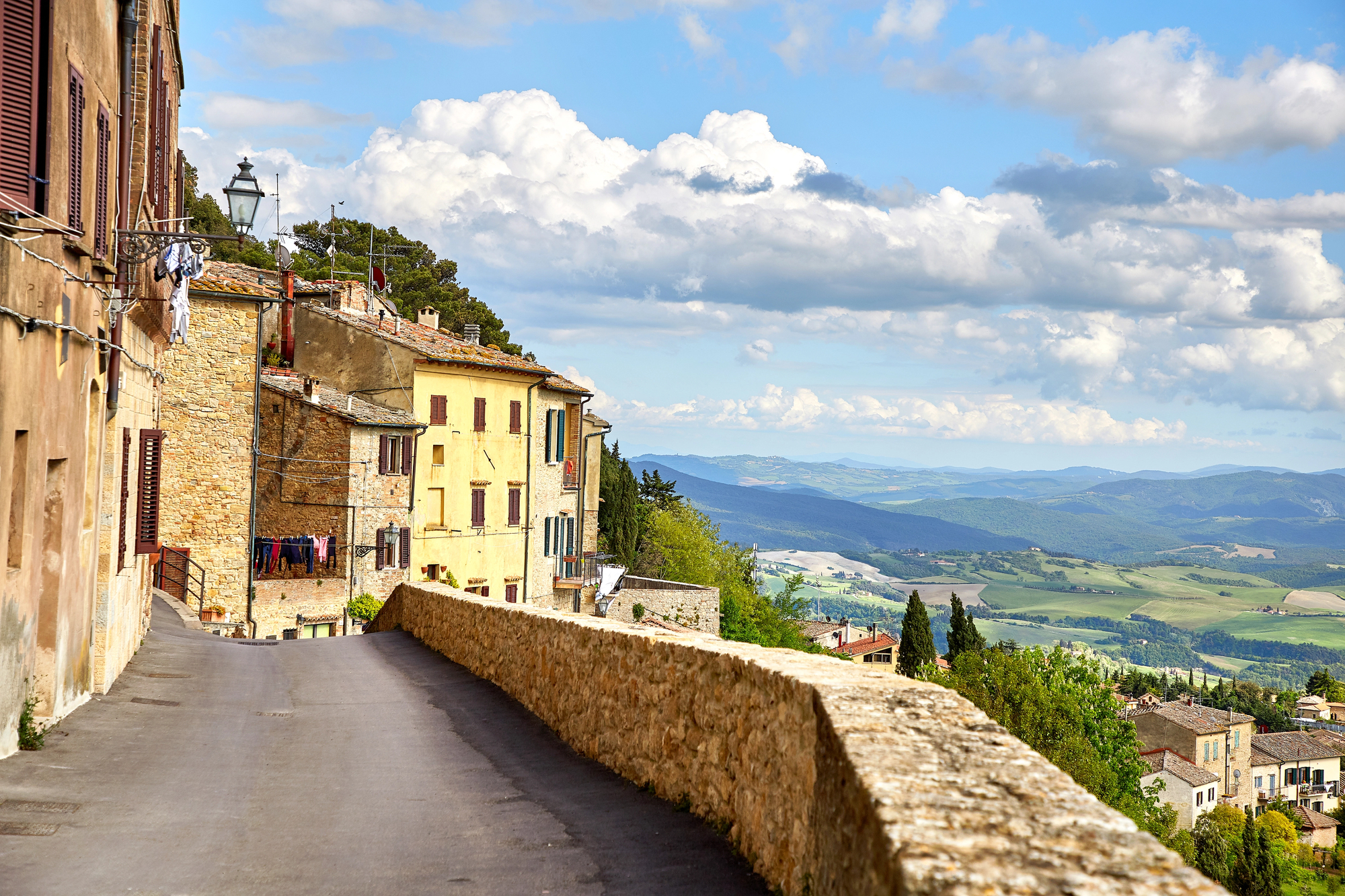
Perched high on a windswept hill, Volterra preserves its Etruscan heritage while offering visitors dramatically fewer crowds than more famous Tuscan towns. This ancient settlement, surrounded by defensive walls dating back to the 4th century BCE, contains remarkably well-preserved Roman ruins, medieval towers, and Renaissance palaces within its compact historic center.
The town’s Etruscan Museum houses one of Italy’s finest collections of artifacts from this mysterious pre-Roman civilization. Volterra gained recent fame as a setting in the “Twilight” series (though filming actually took place in Montepulciano), but its true claim to fame lies in alabaster craftsmanship, a tradition dating back thousands of years.
Watching artisans shape this translucent stone in traditional workshops provides a genuine connection to the town’s living heritage. Reaching Volterra requires either a car or a combination of train and bus connections, taking approximately 2 hours each way but rewarding visitors with authentic Tuscan ambiance far from the tourist crowds.
Arezzo

Often overlooked by travelers rushing between Florence and Siena, Arezzo rewards visitors with impressive art, a relaxed ambiance, and fewer tourists. This ancient Etruscan settlement rises up a steep hill, with its medieval center crowned by the magnificent Duomo and public spaces that exude authentic local character.
Film enthusiasts will recognize Arezzo’s Piazza Grande from scenes in Roberto Benigni’s “Life is Beautiful,” while art lovers pilgrimage here for Piero della Francesca’s stunning “Legend of the True Cross” fresco cycle in the Church of San Francesco. The city’s connection to antiquities continues today in its famous monthly antique fair, held the first Sunday of each month and the Saturday before, when the historic center transforms into one of Italy’s largest open-air markets for collectibles and treasures.
Arezzo lies just a short 30-minute ride from Florence on high-speed trains, with slower regional services taking about an hour, making it one of the most accessible and rewarding day trips for those seeking authentic Tuscan culture.
Montepulciano
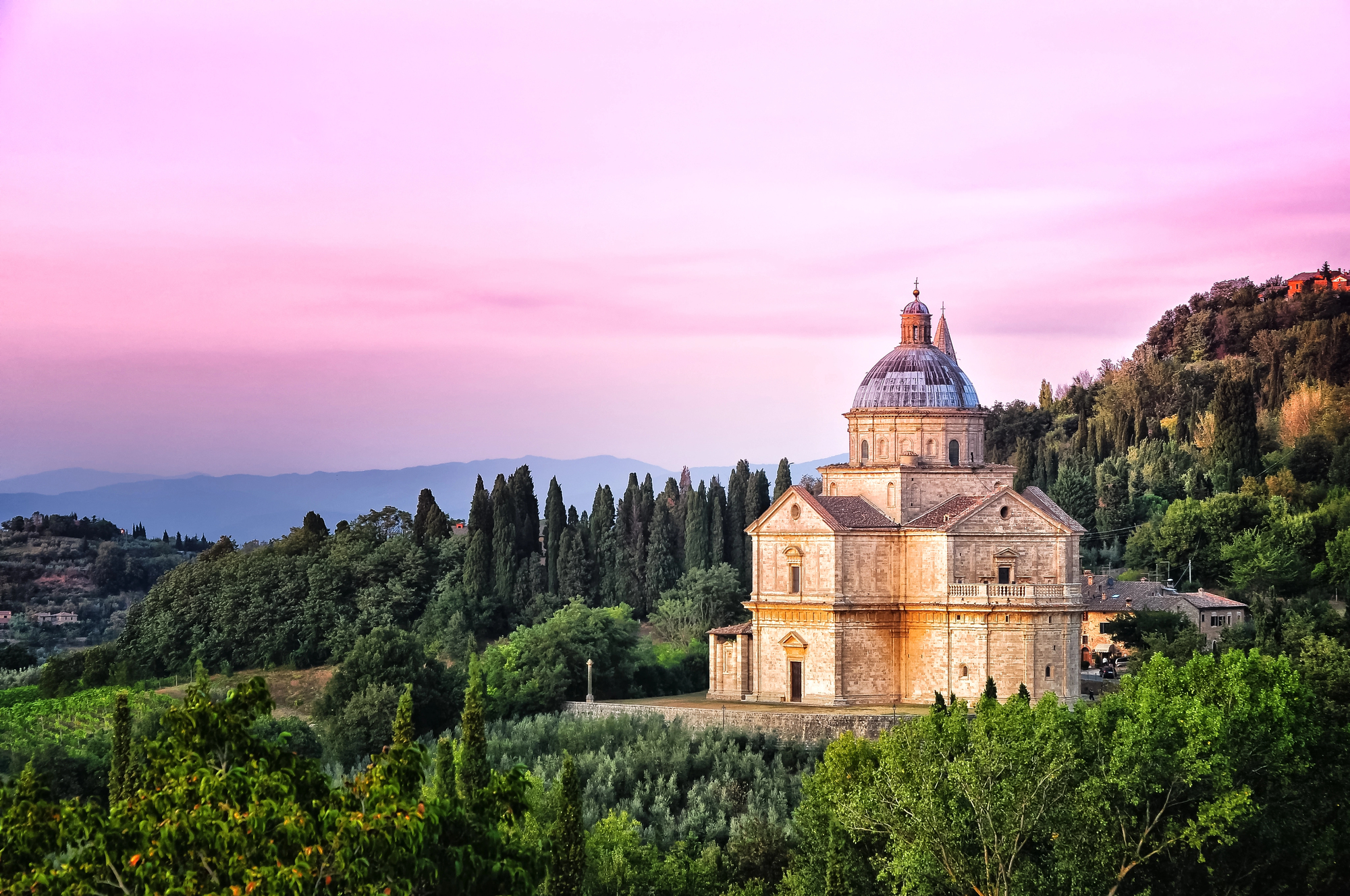
Wine enthusiasts and architecture lovers find paradise in Montepulciano, a hillside town renowned for producing Vino Nobile di Montepulciano, one of Italy’s most prestigious wines. The town’s magnificent Renaissance buildings line the main corso that gradually climbs to the highest point, where the Piazza Grande offers sweeping views across the Val d’Orcia and Val di Chiana.
The elegant Palazzo Comunale, reminiscent of Florence’s Palazzo Vecchio but on a smaller scale, anchors this impressive public space. Below the historic center lie ancient wine cellars carved directly into the tufa rock, where visitors can taste wines aged in massive oak barrels in cool underground settings that have remained unchanged for centuries.
The journey to Montepulciano takes about 1 hour and 45 minutes by car or requires train and bus combinations if traveling by public transportation. While challenging as a day trip without a car, organized tours from Florence often combine Montepulciano with nearby Pienza or Montalcino for a comprehensive wine country experience.
Like Travel Pug’s content? Follow us on MSN.
Val d’Orcia
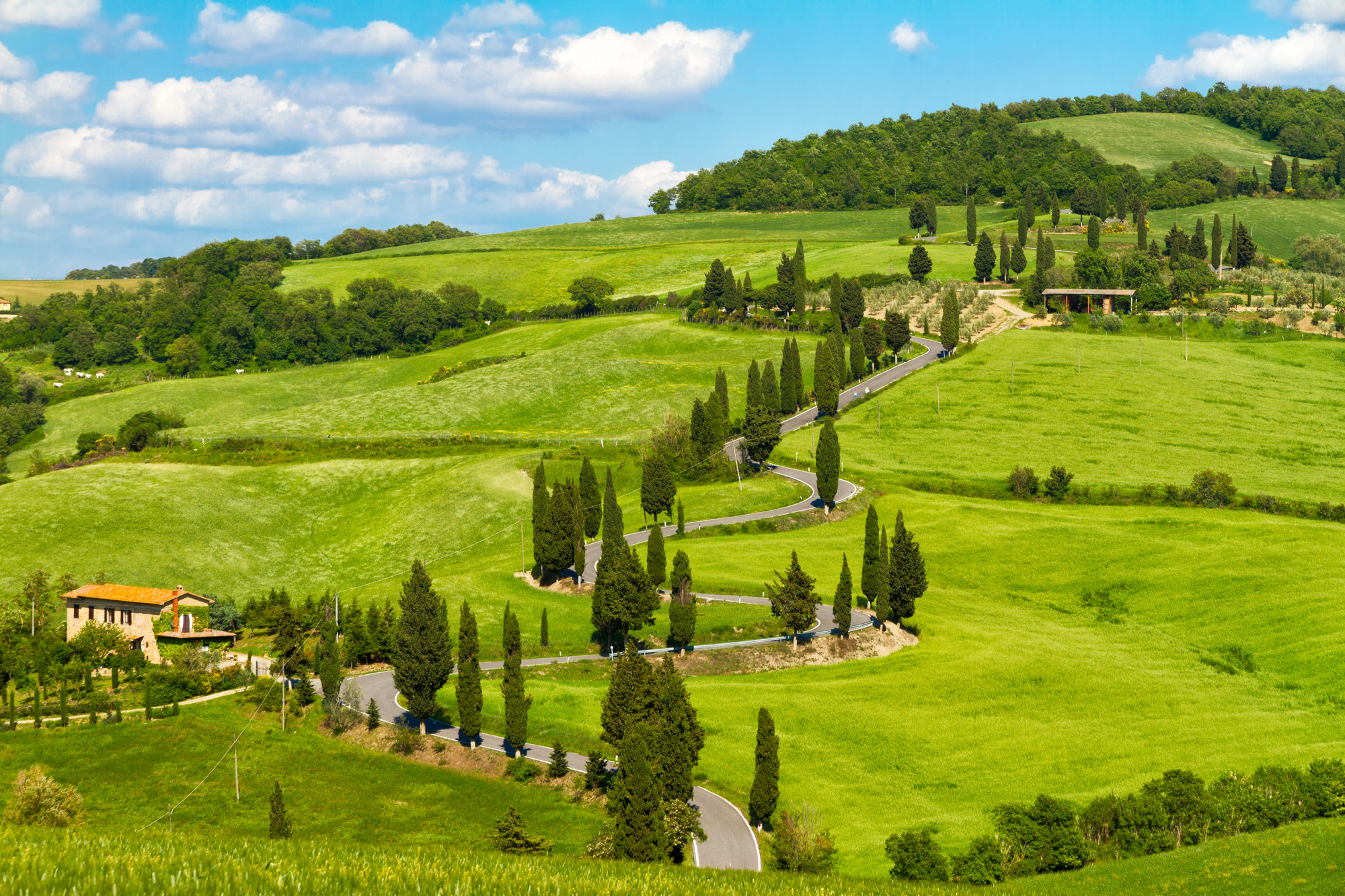
The undulating landscape of Val d’Orcia represents the Tuscany of dreams—cypress trees dotting rolling hills, perfectly positioned farmhouses, and medieval towns crowning distant rises. This UNESCO World Heritage landscape has inspired artists for centuries and continues to captivate photographers seeking the perfect Tuscan scene.
The region stretches south of Siena, encompassing charming towns like Pienza, commissioned by Pope Pius II as the “ideal Renaissance city,” and Montalcino, famous for producing powerful Brunello wines. The cypress-lined road near San Quirico d’Orcia provides the classic Tuscan vista featured in countless photographs and films, including scenes from “Gladiator.”
Throughout the valley, thermal springs like those at Bagno Vignoni, where the main square is actually a large pool of steaming water, offer relaxation after a day of exploration. This region is best visited by car or guided tour, allowing flexibility to stop at viewpoints, hidden chapels, and small family wineries along winding country roads.
Bologna
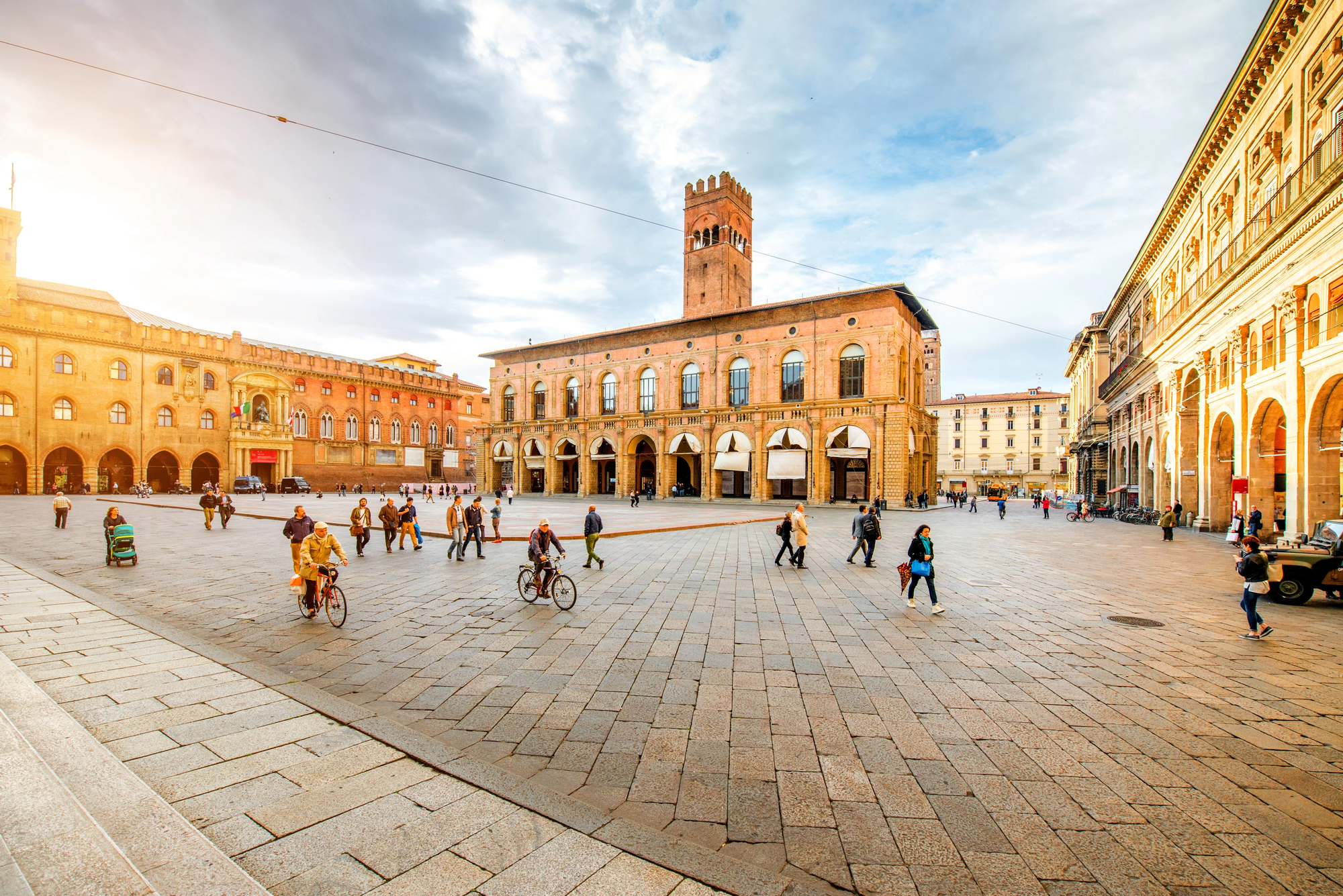
Just 35 minutes from Florence on high-speed trains, Bologna offers a complete change of scenery and culinary tradition. This vibrant university city (home to the world’s oldest university, founded in 1088) combines intellectual energy with serious food culture, earning its nickname “La Grassa” (The Fat One) for good reason.
The city’s signature dishes—authentic ragù (bolognese sauce), tortellini in brodo, and mortadella—provide delicious evidence of why Bologna is considered Italy’s culinary capital. Beyond gastronomy, visitors marvel at the city’s distinctive porticoed walkways covering nearly 25 miles of sidewalks, providing shelter in all weather conditions.
The impressive Piazza Maggiore, dominated by the unfinished façade of San Petronio Basilica, pulses with local life rather than tourist crowds. For unique views, climb one of Bologna’s leaning towers—the Asinelli Tower offers panoramic vistas for those willing to ascend its 498 steps.
The quick train connection makes Bologna a perfect day trip for food lovers seeking to expand their understanding of northern Italian culture beyond Tuscany.
Cortona
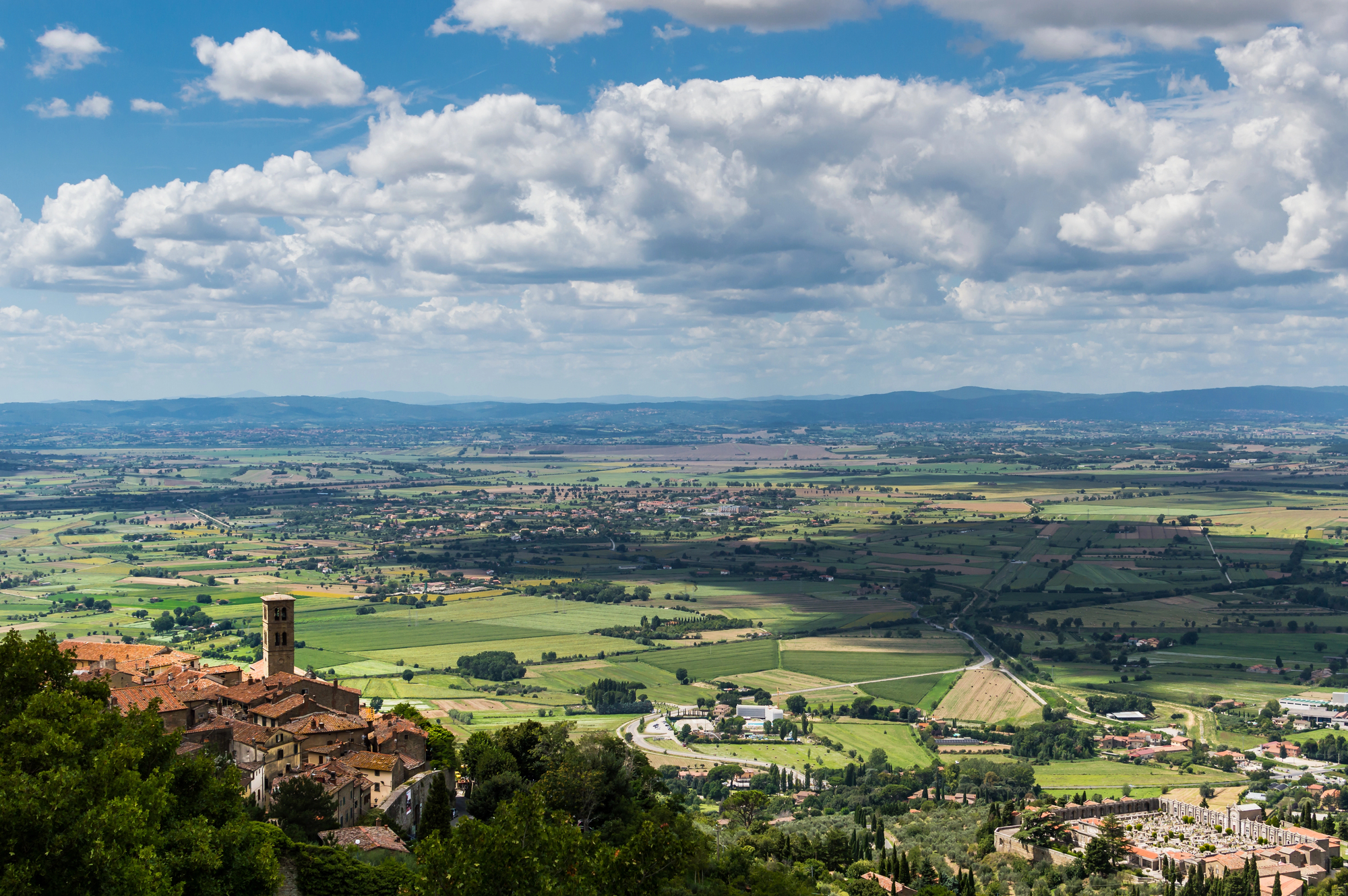
Perched dramatically on a hillside overlooking the Val di Chiana, Cortona gained international fame through Frances Mayes’ memoir “Under the Tuscan Sun” and the subsequent film. Yet this ancient Etruscan settlement maintains authentic character despite its literary celebrity, with steep, narrow streets revealing Renaissance palaces, artisan workshops, and breathtaking viewpoints at every turn.
The impressive Medici fortress crowns the town, while the sanctuary of Santa Margherita offers peaceful reflection along with panoramic views. The small but exceptional Etruscan Academy Museum houses remarkable Bronze Age artifacts, including the famous Etruscan chandelier, one of the most important pieces of this mysterious civilization’s artistic heritage.
Cortona’s relaxed pace invites visitors to linger in café-lined piazzas, browse local shops selling ceramics and linens, and savor traditional Tuscan cuisine at family-run restaurants. Reaching Cortona takes approximately 1 hour and 20 minutes by train to Camucia-Cortona station, followed by a short bus ride up to the historic center.
Like Travel Pug’s content? Follow us on MSN.
Fiesole
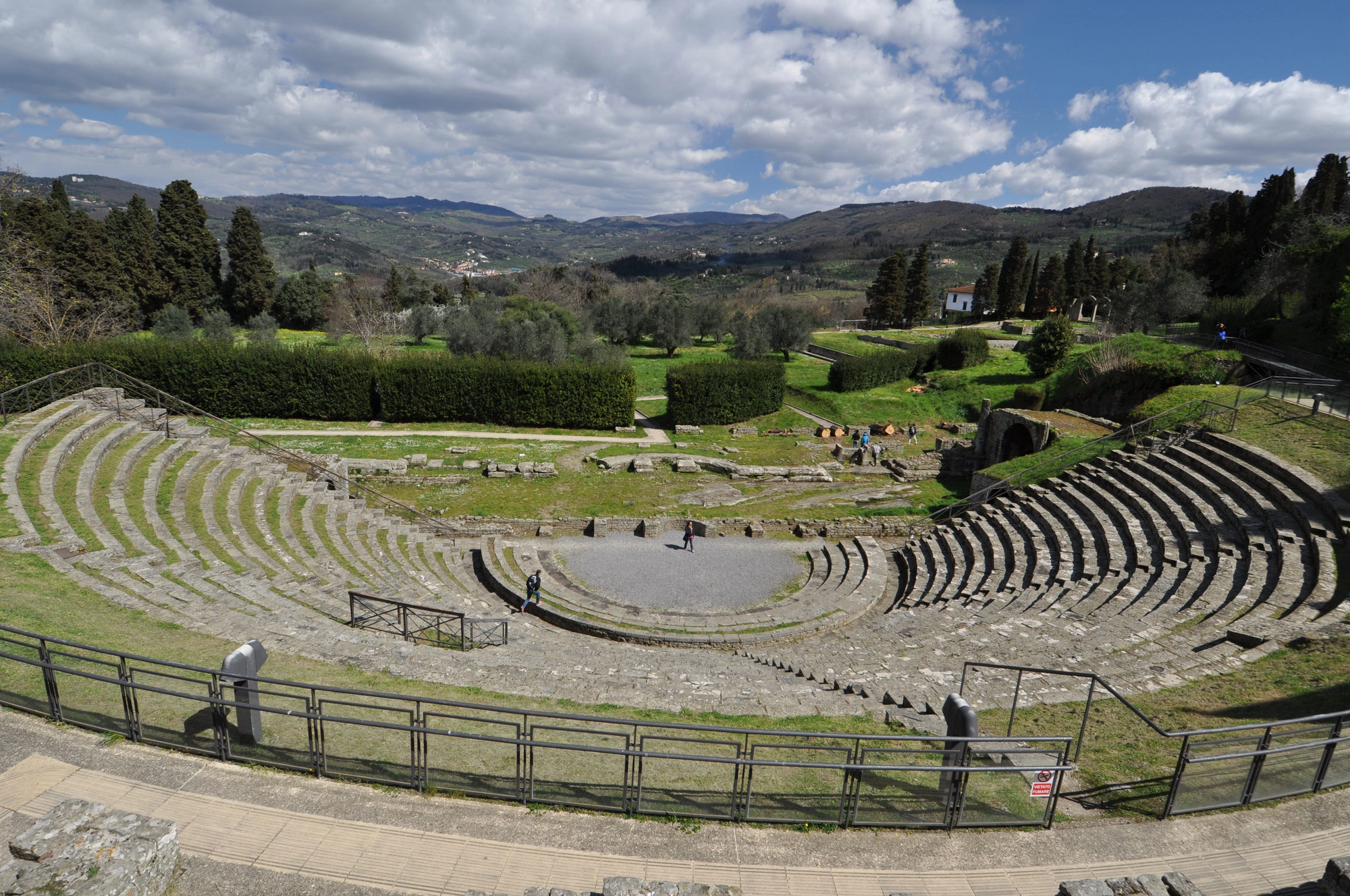
When Florence’s summer heat and crowds become overwhelming, locals escape to nearby Fiesole, perched in the hills just 8 kilometers northeast of the city center. This ancient Etruscan settlement offers cooler temperatures, archaeological treasures, and spectacular views looking back toward Florence’s distinctive skyline dominated by Brunelleschi’s dome.
The well-preserved Roman theater hosts summer concerts under the stars, while the Etruscan-Roman archaeological area provides insights into the region’s pre-Renaissance history. Beyond ancient ruins, visitors enjoy the Renaissance-era Villa Medici and its beautiful gardens, the Franciscan monastery with simple but moving artwork, and walking paths through olive groves and cypress trees.
Reaching Fiesole couldn’t be easier—simply take bus #7 from Florence’s Piazza San Marco for a 20-minute journey that climbs into the hills, making this the perfect half-day escape when you need a break from city sightseeing.
Pistoia
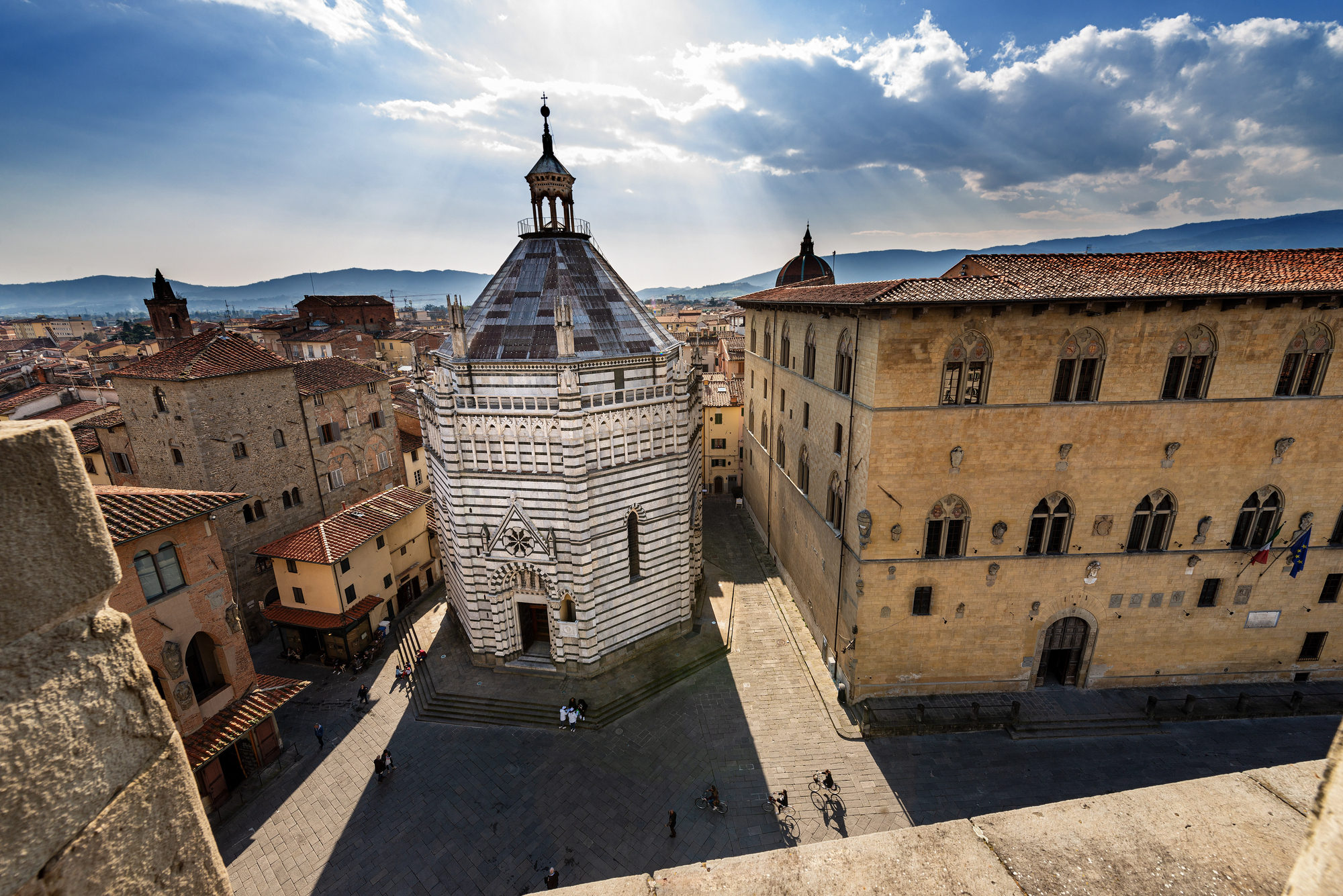
Often described as a “mini-Florence” but without the crowds, Pistoia rewards visitors with impressive architecture, vibrant markets, and authentic local culture just 30 minutes from Florence by train. The city’s beautiful central square, Piazza del Duomo, contains an ensemble of medieval and Renaissance buildings, including the octagonal baptistery, the impressive cathedral, and the medieval town hall.
Underground passages beneath the main hospital complex reveal ancient structures and provide fascinating glimpses into the city’s past. Pistoia maintains strong connections to its agricultural roots through excellent food markets, including the daily market in Piazza della Sala, where locals shop for regional products.
The city earned recognition as Italy’s Capital of Culture in 2017, enhancing its artistic offerings and restoration projects. Summer visitors might catch performances during the Pistoia Blues Festival, which has featured international musicians since 1980.
With frequent train connections from Florence, Pistoia offers an easy, rewarding day trip for travelers seeking authentic Tuscan life beyond the tourist circuit.
Viareggio
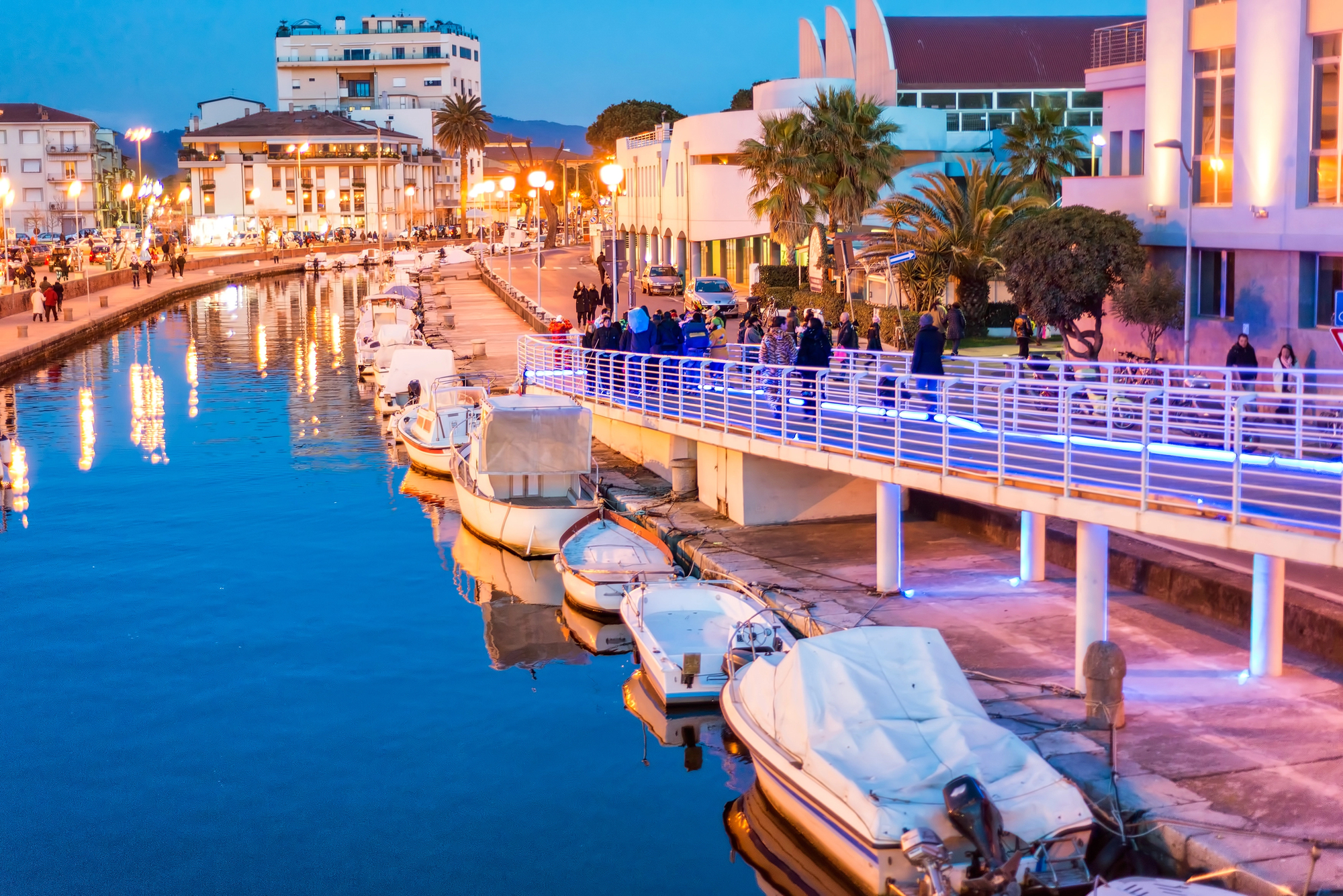
When summer temperatures soar in Florence, the beaches of Viareggio offer perfect relief just 1 hour and 40 minutes away by direct train. This classic Italian seaside resort features a beautiful promenade lined with Liberty-style (Italian Art Nouveau) buildings, seafood restaurants, and beach clubs where visitors can rent umbrellas and loungers for a day of Mediterranean relaxation.
The wide, sandy beaches stretch for miles along the Tuscan coast, providing plenty of space even during peak season. More than just a beach destination, Viareggio maintains cultural significance through its famous Carnival celebrations (among Italy’s most important), its shipbuilding tradition producing some of the world’s finest yachts, and its connection to composer Giacomo Puccini, who lived nearby.
The town’s excellent seafood creates a delicious change from inland Tuscan cuisine, with fresh catches prepared simply but perfectly. Trains run regularly between Florence and Viareggio, making this an accessible coastal escape without needing a car.
Like Travel Pug’s content? Follow us on MSN.
A Note on Transportation
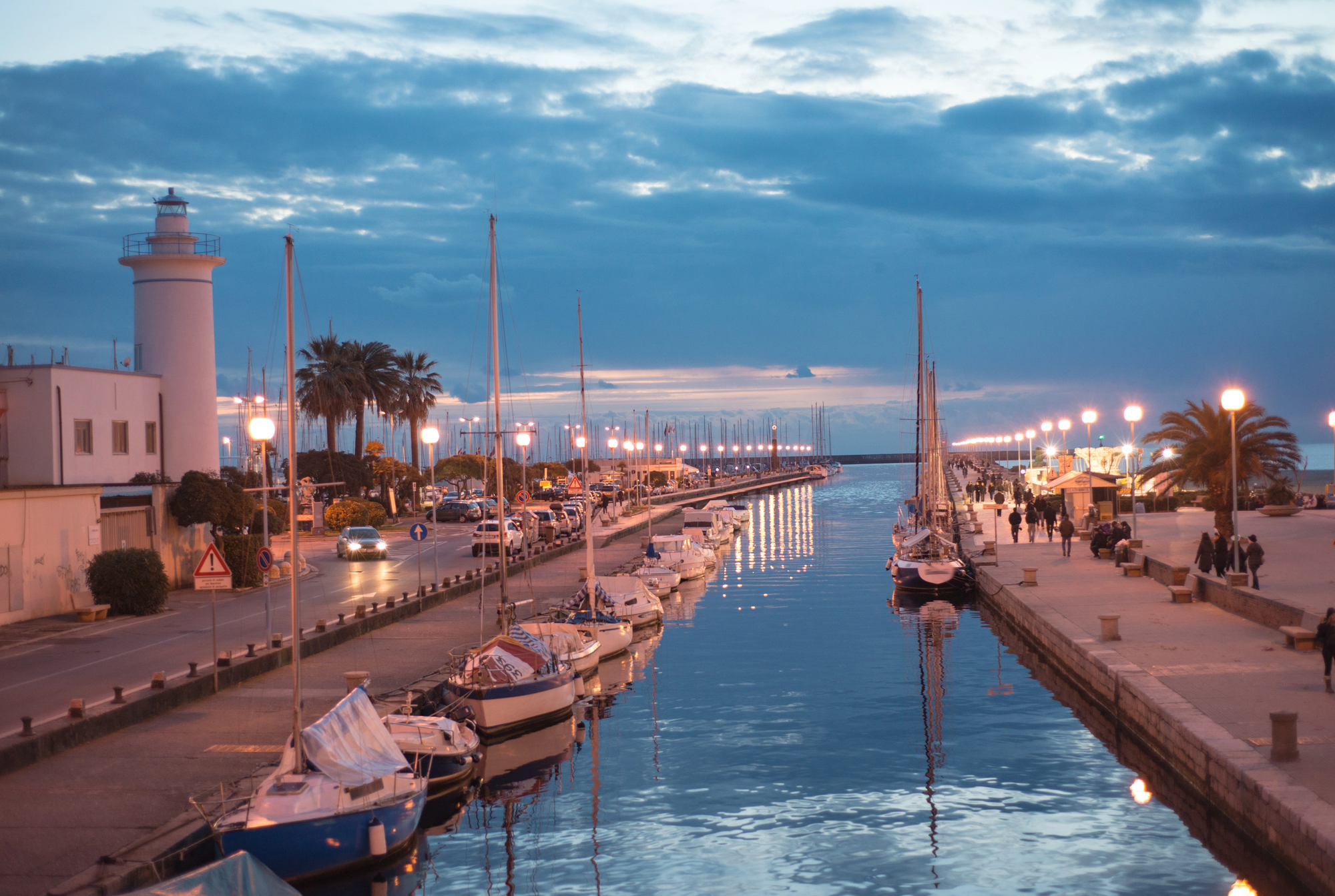
While many of these destinations can be reached by public transportation, renting a car provides maximum flexibility for exploring the Tuscan countryside, stopping at viewpoints, and visiting smaller villages not served by trains or buses. For those preferring not to drive, numerous tour companies offer guided day trips from Florence to popular destinations, often combining several stops into thematic experiences like “Tuscany in a Day” or “Chianti Wine Tour.”
The regional train network connects Florence to many towns, with tickets available at the station or through the Trenitalia website and app. For bus travel, SITA provides services to many Tuscan destinations from Florence’s main bus station near Santa Maria Novella train station. Whether traveling independently or with a guide, these fifteen day trips reveal the remarkable diversity of experiences awaiting just beyond Florence’s historic walls—each one adding depth and context to your understanding of this extraordinary region.
More from Travel Pug

- Cities Growing so Fast You Won’t Recognize Them in 10 Years
- 13 Destinations Where Tourists Regularly Regret Their Trip
- 16 U.S. Cities That Are Quietly Becoming Travel Hotspots
- Where to Travel If You Love Long Bus Rides and Daydreams
- 20 Cities Perfect for Solo Travelers Who Crave Adventure & Culture
Like Travel Pug’s content? Follow us on MSN.
